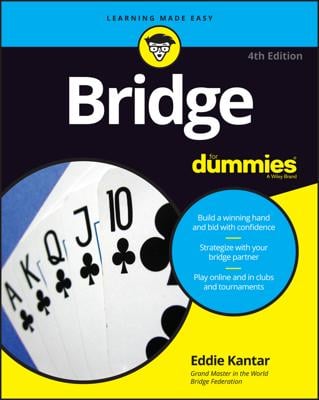Why jump shift?
The two most frequent reasons for jump shifting are:-
To show a hand that has a strong five- or six-card suit with 17 or more HCP. (You can jump shift with 16 HCP if you have a seven-card suit).
-
To show a hand with four- or five-card support for your partner’s suit, plus 17 or more SP.

While you’re busily adding up your points, you hear your partner open 1♣. Respond 2♠ (not 1♠), a jump shift that alerts your partner that game is a certainty. At your next opportunity, repeat your spades (telling your partner that your jump shift was based on a long, strong suit).
A jump shift can also be based on support (usually four or more cards) for your partner’s suit, plus 17 or more support points (SP). Jump shift in your longest side suit, and then return to your partner’s suit. This figure gives you another chance to make your partner happy (which is always a good idea, especially since you're on the same team).

Your hand has just blossomed to 17 SP (add 1 for each suit with two cards, or doubleton), enough to jump shift. After your partner bids 1♥, respond 3♦ and then return to hearts.

